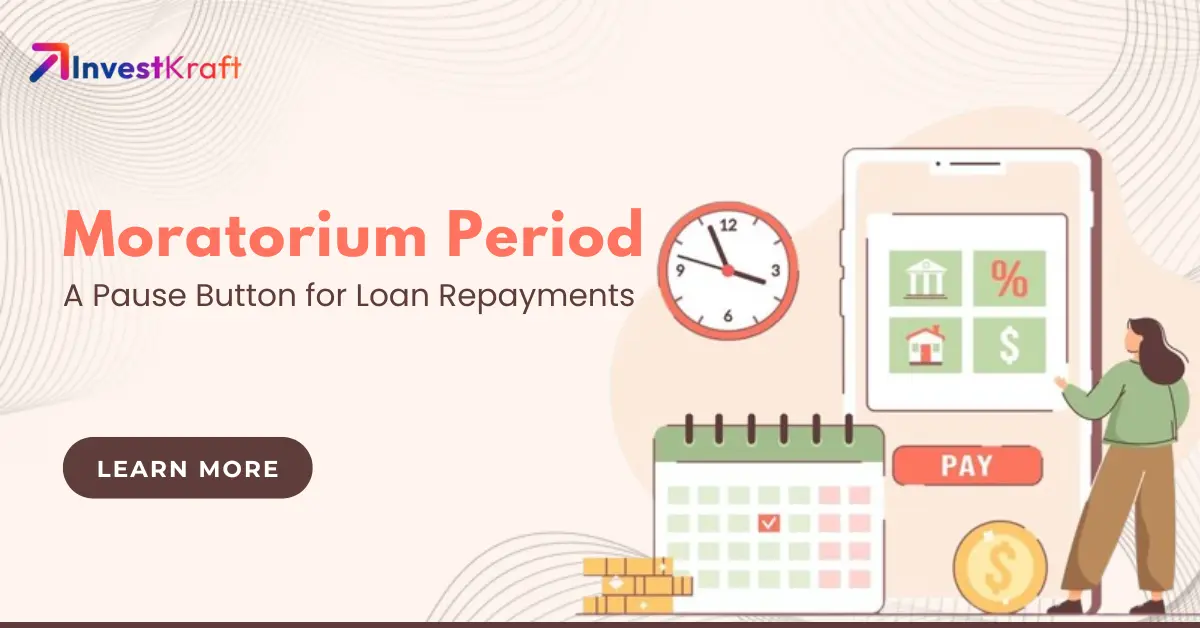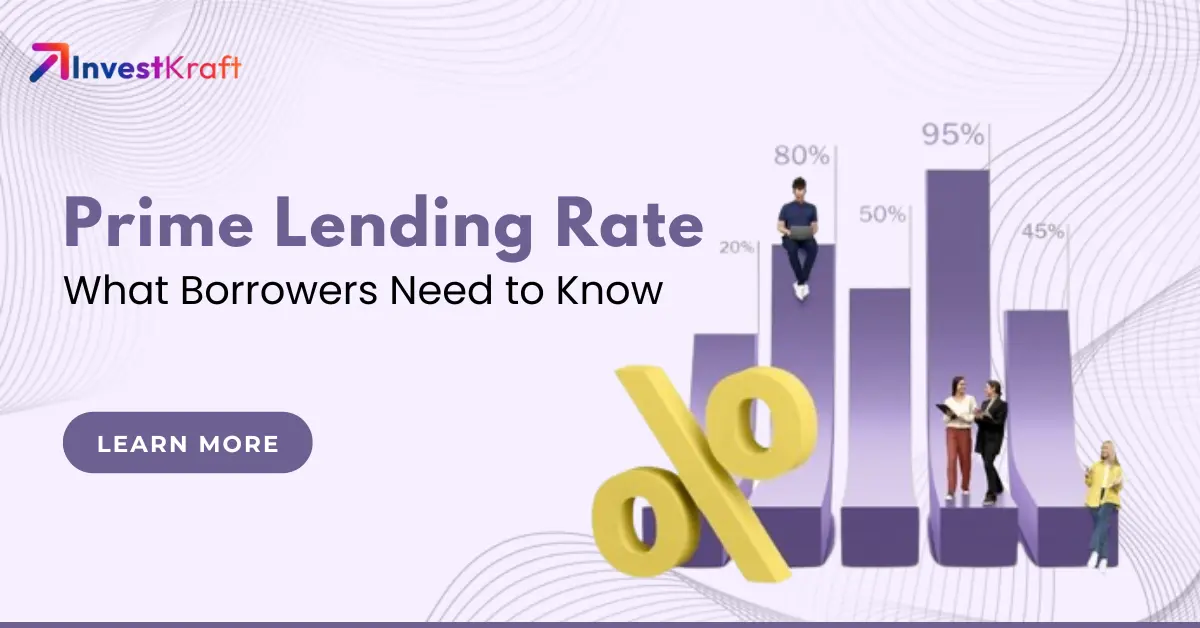Choosing the Right Interest Rate: Flat Interest Rate vs Reducing Balance Rate

It is essential to carefully review your loan agreement and pay close attention to details such as the loan amount, EMI, additional fees and foreclosure terms. However, the interest is particularly crucial as different types of interest rates may be applied by the lender. In addition to understanding the interest rate, it is important to grasp the type of interest rate being utilized and how it will affect your loan.
Two of the most common types of interest rates on loans are - flat interest rates and reducing interest rates (also called reducing balance rates). Allow us to elaborate on these interest rates to ensure a comprehensive understanding.
Why is it Important for Me to Choose the Right Interest Rate?
Choosing the appropriate interest rate structure holds significant importance for various reasons:
- Lower interest rates benefit borrowers by reducing their overall borrowing costs, while a well-designed structure can result in significant savings over the loan terms. Lenders, on the other hand, need to strike a balance between attracting borrowers and earning a return on their capital.
- The monthly payments of your cash flow are determined by the interest rate structure you choose. It is important to choose a structure that is in line with your income and cash flow to avoid any such issues such as default.
- Differential financial goals may require different interest rate structures. For instance, a fixed rate could be well-suited for a long-term loan where stability is crucial, while an adjustable interest rate might be more suitable for a short-term loan where you anticipate interest rates to decrease. Each structure has its advantage and is best utilized based on the specific financial goal at hand.
Flat Interest Rate Loans
A flare interest rate on a loan implies that the interest is calculated on the entire loan amount and it will remain constant over the loan duration without any changes. The principal amount is used to determine the rate of interest for the loan and this rate will not fluctuate.
Flat interest rates are commonly available in various financial institutions, particularly at non-banking financial institutions including finance companies.
Which Factors Affect Flat Interest Rates on Loans?
Listed below are the factors that affect flat interest rates on loans:
- Market competition
- Long loan
- Loan risk level
- Loan amount
Pros and Cons of Flat Rate Loans
In the following table, we have discussed the pros and cons of flat interest rates on loans:
|
Pros of Flat Rate Loans
|
Cons of Flat Rate Loans
|
- Flat interest rates are ideal for borrowers who favour simplicity because they are easy to comprehend and calculate
- Borrowers enjoy the advantage of having consistent monthly payments that do not fluctuate throughout the loan. This predictability can help borrowers plan their budgets and manage their finances more effectively. Knowing exactly how much they need to pay each month can provide a sense of stability and peace of mind.
- Budgeting is a great tool for individuals who are looking to carefully manage their monthly financial commitments. It allows borrowers to track and plan their expenses, ensuring that they can meet their financial obligations on time. By creating a budget, borrowers can gain better control over their finances and make sure they can meet their financial goals.
|
- Flare interest rates are more expensive compared to reducing rates, leading to higher interest payments.
- Paying higher amounts in the initial years of the loan can put a strain on cash flow, especially during the early stages. The front-loaded payment structure means that monthly payments are higher at the beginning of the loan term, potentially impacting the borrower’s financial situation during this period.
- Limited interest savings may not be the most ideal option for borrowers who are looking to minimize the amount of interest they pay over the lifespan of their loan.
|
Example Explaining Flat Interest Rate
For a 5-year loan with a principal amount of 10,00,000 rupees and a flat interest rate of 10%, the annual interest payment remains constant at 1,00,000 rupees. Therefore, over five years, the total interest paid would amount to 5,00,000 rupees.
- Total amount paid for the loan duration = 10,00,000+5,00,000 = 15,00,000
- Annual instalment (Total amount/ Number of years) = Rs. 3,00,000
- Monthly EMI = Rs. 25,000
Reducing Rate Loans
Partial payments made during the term of a loan can further reduce the interest rate, known as reducing interest rate or reducing rate loans. In this case, the interest is calculated based on the remaining loan amount each month. This is also referred to as an annual rest when the principal amount decreases on an annual basis.
Pros and Cons of Reducing Interest Rates on Loans
|
Pros of Reducing Interest Rates
|
Cons of Reducing Interest Rates
|
- Potential long-term cost savings can be achieved through reduced interest payments throughout the loan.
- Lower initial payments can help early-stage businesses by allowing them to have more breathing room.
- Lower initial payments could increase borrowers’ chances of qualifying for a larger loan amount. This potential for larger loans is due to the reduced financial burden in the early stages of repayment.
|
- Loans with potentially higher rates may pose a greater risk due to fluctuating interest rates. It is important to carefully consider the potential impact on overall repayment amounts and affordability. Additionally, borrowers should assess their ability to manage potential fluctuations in loan payments.
- Monthly payments may gradually increase over the years, which could impact cash flow and budgeting. This change in payment amounts should be considered when planning for future financial obligations.
- Borrowers should also be aware of potential additional expenses such as origination fees, title insurance and appraisal fees. These costs can contribute to the overall expenses of obtaining a loan and should be factored into the budget. It is important to carefully review the details of the loan agreement to understand all the potential additional costs involved.
|
Example Explaining Reducing Interest Rate
Assume a 10,00,000 rupees loan at a 10% interest rate. If you repay the loan in 3 years, the total amount to be repaid would be 13,00,000 rupees. This can be divided into 36 months resulting in 36,120 rupees EMI per year. The reducing balance approach would be 32,270 rupees. This is a good personal loan interest rate offered by private lenders for quick loans.
How Should I Choose Between a Flat Interest Rate and Reducing Interest Rate?
When deciding between flat interest rates and reducing interest rates, it is crucial to consider your financial goals, personal preferences and loan purposes. Flat rates offer consistent installments for predictable payments while reducing rates can lead to savings over time. Carefully evaluating both options, taking into account the loan duration and monthly budgeting needs, will help you make an informed decision.
Can I Switch Between Interest Rates During a Loan Tenure?
In most cases, you cannot switch between interest rates during the loan term. This means that the interest rate and type you select at the start of the loan will remain fixed.
However, there are a few exceptions:
- Convertible loans, offered by certain lenders, permit borrowers to transition from an adjustable-rate mortgage (ARM) to a fixed-rate mortgage (FRM) at a predetermined point within the loan duration. However, it is important to note that this option typically incurs additional fees.
- It is important to understand that a lender agreeing to a loan modification with a rate change is quite uncommon and typically only occurs in certain situations, such as financial hardship. Therefore, if you are facing difficulties with your loan and believe a rate change could help, it is crucial to communicate openly with your lender to explore all potential options.
It is advisable to consult with your lender before obtaining a loan to fully comprehend the terms and any possibility of future adjustments.
Related Posts;

Author: Abhik Das
Abhik Das is a versatile content writer with over 5 years of experience crafting engaging and informative content across diverse industries. His expertise spans the fields of ed-tech, pharmaceuticals, organic food, travel, sports, and finance.
Here's what sets Abhik apart:
Content Versatility: Able to adapt writing style and tone to suit various audiences and content needs.
SEO Proficiency: Creates content optimized for search engines, ensuring discoverability and organic traffic.
Deep Research: Conducts thorough research to ensure content accuracy and credibility across complex topics.
Engaging Storytelling: Captures reader interest with clear, concise, and compelling writing.
Abhik's diverse background empowers him to deliver insightful content across a wide range of subjects. Whether you're seeking engaging explainer pieces on the latest financial trends, informative guides to organic food choices, or captivating travelogues, Abhik has the expertise to craft content that resonates with your audience.

















